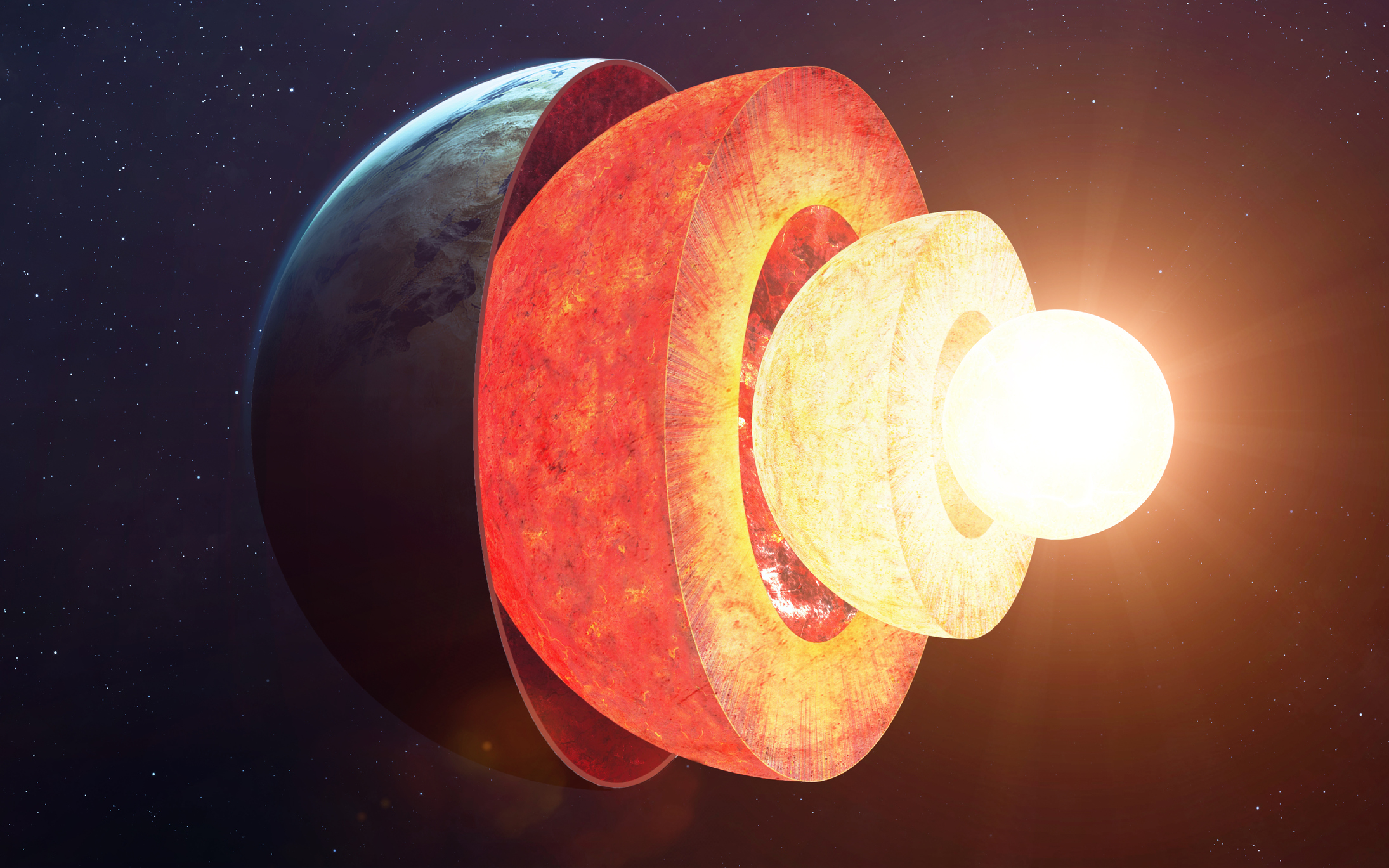Earth's inner core may be slowing down compared to the rest of the planet
This is not an Earth-stopping event, however.

The spinning, solid inner core of the Earth may be slowing down by a minuscule amount, according to evidence from earthquakes.
Researchers Yang Yi and Song Xiaodong from Peking University in China looked at measurements of seismic waves passing through the Earth resulting from near-identical earthquakes dating all the back to the 1960s.
These waves should be the same in some respects wherever they occur if the Earth had a consistent structure all the way through. However, differences in wave patterns and travel time provide clues about the debated processes and activities happening deep within the Earth across decades.
Related: How has Earth's core stayed as hot as the sun's surface for billions of years?
The study published in the journal Nature Geoscience found that the planet's solid iron core 3,200 miles (5,150 kilometers) below our feet had been rotating slightly faster than the Earth's mantle. But since 2009 there has been little difference in travel time of waves through the Earth, suggesting the spin has slowed down, and could soon, if we could see down to the core, appear to be rotating in the opposite direction relative to us (not actually changing direction). Previous studies suggested a steady rotation of the inner core.
This is not an Earth-stopping event however. It won't, for example, have any major impact on the Earth's magnetic field, which is generated by the movements of the molten outer core.
There is also evidence that this apparent slowing, speeding up and oscillation of the rotation of the inner core is part of a cycle lasting around 70 years, likely due to gravitational coupling between the Earth's inner core and the much more massive mantle.
Get the Space.com Newsletter
Breaking space news, the latest updates on rocket launches, skywatching events and more!
The authors conclude that the oscillation of the rotation of the inner core coincides with changes in the Earth's surface system, such as tiny fluctuations in the length of a day and magnetic field. "As such, our finding may imply dynamic interactions between the deepest and shallowest layers of the solid Earth system," the authors write.
Still, there is some disagreement about what the data represent, and despite headlines claiming the Earth's inner core might change directions, some Earth scientists and science communicators urge a more reasonable take on the study.
"The inner core doesn't come to a full stop," Hrvoje Tkalcic, a geophysicist at the Australian National University, told CNN.com. Instead, Tkalcic said, the finding simply indicates "that the inner core is now more in sync with the rest of the planet than a decade ago when it was spinning a bit faster."
"Nothing cataclysmic is happening," he added.
Follow us @Spacedotcom, or on Facebook and Instagram.
Join our Space Forums to keep talking space on the latest missions, night sky and more! And if you have a news tip, correction or comment, let us know at: community@space.com.

Andrew is a freelance space journalist with a focus on reporting on China's rapidly growing space sector. He began writing for Space.com in 2019 and writes for SpaceNews, IEEE Spectrum, National Geographic, Sky & Telescope, New Scientist and others. Andrew first caught the space bug when, as a youngster, he saw Voyager images of other worlds in our solar system for the first time. Away from space, Andrew enjoys trail running in the forests of Finland. You can follow him on Twitter @AJ_FI.









